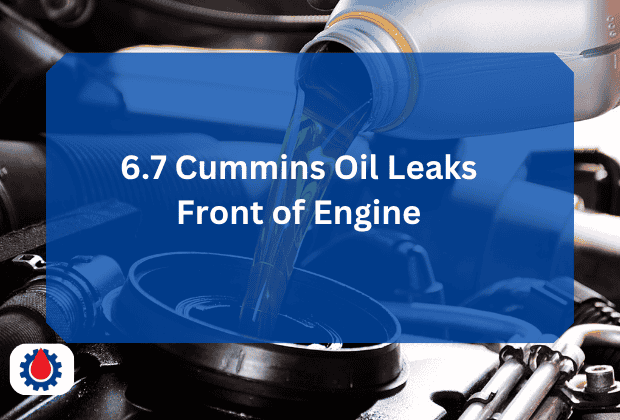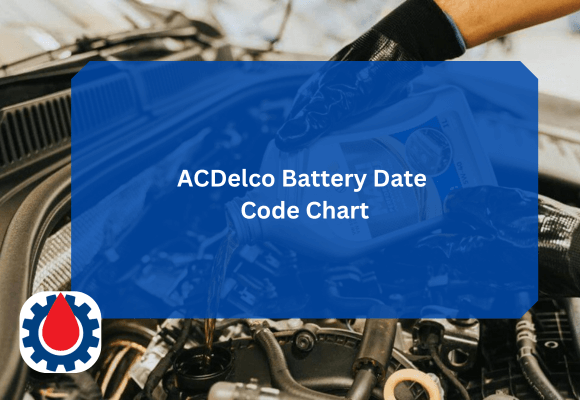In this post, we’ll explore the causes, symptoms, diagnosis, and solutions for oil leaks at the front of a 6.7 Cummins engine, providing a comprehensive guide.
6.7 Cummins Oil Leaks Front of Engine
Common Causes of Front Engine Oil Leaks:
1. Front Crankshaft Seal: The front crankshaft seal, located behind the harmonic balancer, is a frequent culprit. Over time, this seal can wear out due to heat, pressure, and age, allowing oil to seep out. Symptoms include oil pooling under the engine or visible residue on the front cover.
2. Timing Cover Gasket: The timing cover houses the timing gears and seals the front of the engine. A degraded or improperly installed gasket can lead to leaks, often noticeable as oil streaks along the front cover or on the ground beneath the vehicle.
3. Oil Cooler Gasket: The oil cooler, located near the front of the engine, relies on gaskets to maintain a tight seal. These gaskets can fail due to thermal cycling or poor maintenance, resulting in oil leaks that may appear near the front.
4. Turbocharger Oil Feed/Drain Lines: The turbocharger, positioned toward the front, has oil feed and drain lines that can develop leaks. Loose connections, cracked lines, or worn seals can cause oil to escape, which is often mistaken for a front cover issue.
5. Improper Maintenance or Installation: Over-tightening or under-tightening bolts during maintenance, using low-quality seals, or failing to replace gaskets during repairs can contribute to leaks. This is particularly common after recent engine work.
Related 6.7 Cummins Engine Oil(Choose the Right Oil With This Expert Guide)
Solutions and Repairs
1. Front Crankshaft Seal Replacement: Replacing a worn crankshaft seal requires removing the harmonic balancer and pulley. Use a high-quality OEM or aftermarket seal, and ensure proper installation to prevent future leaks. This repair typically costs $200-$500 at a shop.
2. Timing Cover Gasket Replacement: This involves removing the timing cover, which may require partial disassembly of front-end components. Replace the gasket with a high-quality one and torque bolts to the manufacturer’s specifications. Expect costs of $300-$600.
3. Oil Cooler Gasket Repair: Replacing the oil cooler gasket is labor-intensive, as it requires accessing the cooler assembly. Use OEM gaskets for reliability. Repair costs can range from $400-$800.
4. Turbo Line Inspection and Repair: Inspect the turbo oil feed and drain lines for cracks or loose fittings. Replace damaged lines or seals, and ensure proper torque. This repair is typically less expensive, ranging from $100-$300.
5. Preventive Maintenance: Regularly check oil levels, use high-quality oil and filters, and follow the manufacturer’s maintenance schedule to prevent premature wear of seals and gaskets.
Related Cummins Engine Oil Filters(Top 3 Best 2025)
Symptoms of a Front Engine Oil Leak
Identifying an oil leak early can prevent more significant issues. Here are the key symptoms to watch for:
- Visible Oil Residue: Look for oil on the front of the engine, harmonic balancer, or undercarriage. A thin film or streaks of oil are telltale signs.
- Low Oil Levels: Regularly check your dipstick. A consistent drop in oil levels without visible puddles may indicate a slow leak.
- Burning Oil Smell: If oil drips onto hot engine components, you may notice a burnt oil odor, especially after driving.
- Oil Spots Under the Vehicle: Puddles or spots of oil under the front of your truck when parked are a clear indicator.
- Engine Performance Issues: In severe cases, significant oil loss can lead to low oil pressure, triggering warning lights or causing engine strain.
Related Oil Leak Between Engine and Gearbox(5 Causes + Solutions)
Diagnosing the Leak
Pinpointing the exact source of an oil leak requires a systematic approach. Follow these steps to diagnose the issue:
- Clean the Engine: Start by cleaning the front of the engine with a degreaser and pressure washer. This removes old oil residue, making it easier to spot new leaks.
- Visual Inspection: With the engine clean, inspect key areas like the crankshaft seal, timing cover, oil cooler, and turbo lines. Use a flashlight to check hard-to-see areas.
- Run the Engine: Start the engine and let it idle. Watch for fresh oil seeping from specific components. A UV dye kit can help trace leaks by adding fluorescent dye to the oil and using a blacklight to locate the source.
- Check for Loose Bolts or Fittings: Ensure all bolts on the timing cover and turbo lines are properly torqued. Loose fittings can often be tightened to resolve minor leaks.
- Pressure Test: In some cases, a mechanic may perform a pressure test to identify leaks in the oil system, particularly for hard-to-diagnose issues.
Related Cummins Engine Oil Capacity Chart(A to Z Models)
Preventive Tips
To minimize the risk of future oil leaks:
- Use Quality Parts: Always opt for OEM or reputable aftermarket seals and gaskets.
- Regular Inspections: Check for early signs of leaks during routine maintenance.
- Proper Torque: Ensure bolts and fittings are torqued to spec during repairs.
- Monitor Oil Changes: Use the recommended oil type (typically 5W-40 or 15W-40 synthetic) and change it at the correct intervals.
Related How to Fix an Oil Leak Between Engine and Transmission(In 5 Steps)
Final words
Oil leaks at the front of a 6.7 Cummins engine, while common, are manageable with proper diagnosis and timely repairs. By understanding the causes, such as crankshaft seal wear, timing cover gasket failure, or turbo line issues, and following a systematic approach to diagnosis, you can address the problem effectively.
Regular maintenance and quality parts are key to preventing leaks and ensuring your Cummins engine continues to perform reliably. If you spot signs of a leak, act quickly to protect your engine and avoid costly repairs down the road.




